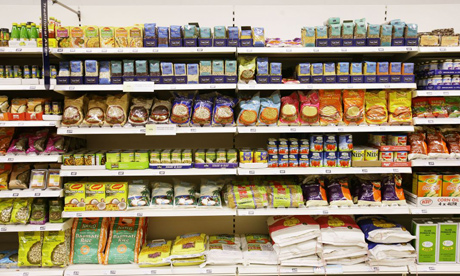Types of Inventory Risks
Many firms with manufacturing facilities have a huge amount of inventory. Retail and whole sale businesses also have enormous amounts of inventory. Even though sufficient inventory will ensure a smooth flow of business processes and avoid manufacturing delays, but this inventory also has certain risks associated with it.
In order to alleviate such risks from your business, you need to understand them completely. By doing this, you will be able to draft appropriate risk management strategies using best practices for inventory control. A few key inventory risk types are mentioned below.
Theft
Theft is one of the biggest risks with regard to inventory control, specifically when the inventory is higher in value. If internal employees are involved in the theft, it is much more difficult to identify as they know the entire system and would probably be wise enough to erase all their tracks after the theft.
Every year, firms spend millions of dollars to prevent theft risk. They invest money in security measures like cameras or by hiring watch guards to prevent any incidents of inventory theft.
Inventory Waste & Damage
Inventory usually tends to get damaged while being used in the normal business processes. Damaged inventory cannot be used and goes to waste, increasing the costs of the business. To avoid inventory from being damaged and to reduce waste costs, companies create inventory control policies to minimize the damage as much as possible as well as issue rules and regulations regarding the effective use of inventory to prevent waste.
Inventory Loss
Inventory is a current asset to a firm. A loss of inventory means a reduction in the company equity. Goods in the inventory can get lost if the inventory is not managed properly or if the employees are not careful in handling inventory.
Firms have now created an inventory control system to identify the exact amount of inventory loss as well as the cause of the loss. This enables them to reduce company expense and prevent such inventory losses.
Shelf Life
 Many products have a certain amount of shelf life. This poses an inventory risk for the company. Perishable items like milk and eggs have a smaller shelf life than other products and companies producing such goods may be at a higher inventory risk. This requires manufacturers to have a tight control over their manufacturing and inventory control policies. In such cases, firms produce only as much as the demand requires. Producing less than required will prevent the company from meeting the demand while producing a surplus may increase waste costs.
Many products have a certain amount of shelf life. This poses an inventory risk for the company. Perishable items like milk and eggs have a smaller shelf life than other products and companies producing such goods may be at a higher inventory risk. This requires manufacturers to have a tight control over their manufacturing and inventory control policies. In such cases, firms produce only as much as the demand requires. Producing less than required will prevent the company from meeting the demand while producing a surplus may increase waste costs.
Lifecycle
All products go through the product life cycle. Those products that are in the decline stage are at a higher inventory risk. Firms of such products tend to tighten their inventory control and manufacturing policies and only produce enough to sufficiently meet their current demand. A surplus production of goods that is not sold in the market will become obsolete and will be a heavy burden on the firm.
| Sitemap | Links | Copyright 2024 Best-Practice.com. All Rights Reserved. |

